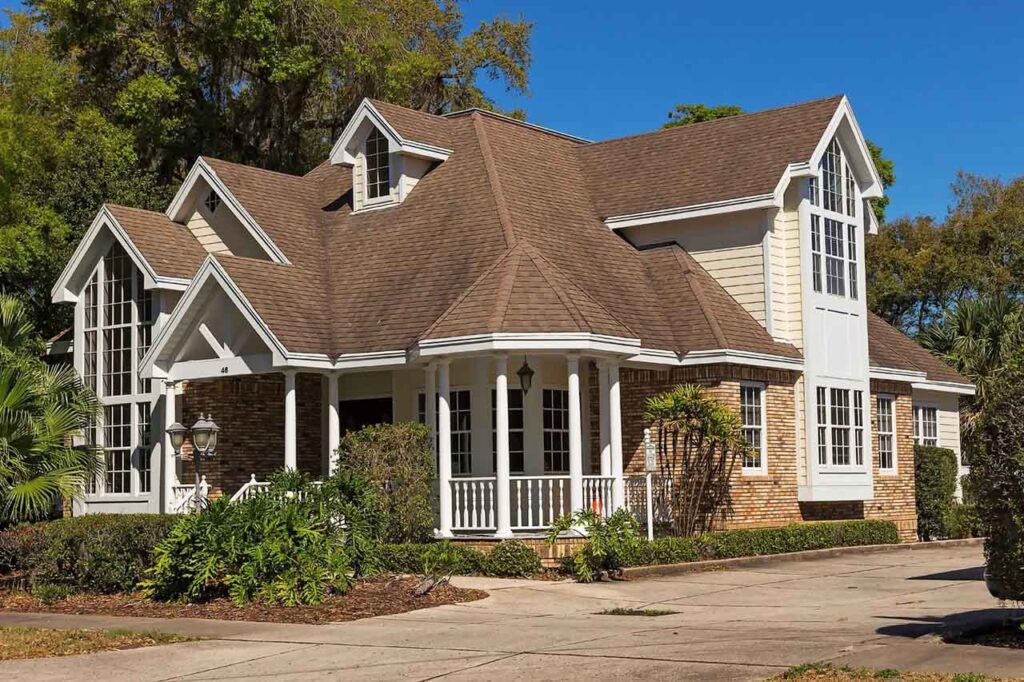When it comes to the place we call home, the roof over our heads is one of the most critical components. A well-constructed and durable roof not only protects us from the elements but also adds to the overall value of our property. But have you ever wondered why some roofs last longer than others? The longevity of residential roofs depends on various factors, including the materials used and the local climate. In this blog, we will explore the different types of residential roofs and what contributes to their longevity.
Asphalt Shingles:
Asphalt shingles are perhaps the most common type of residential roofing material in the United States. They are popular for their affordability and versatility. However, their longevity can vary depending on factors such as the quality of the shingles and the climate of the area.
The average lifespan of asphalt shingles typically ranges from 15 to 30 years. Three-tab shingles, the most basic type, have a shorter lifespan compared to architectural or dimensional shingles. The latter can last up to 30 years or more if properly maintained.
Climate plays a significant role in the longevity of asphalt shingles. In areas with extreme temperature variations and frequent weather disturbances, shingles tend to deteriorate faster. Proper ventilation and regular inspections can help extend the life of asphalt shingle roofs.
Wood Shakes and Shingles:
Wood shakes and shingles have been used for centuries and are known for their natural beauty and insulation properties. However, their longevity is heavily influenced by the climate and maintenance.
In moderate climates with lower humidity and minimal rainfall, wood shakes can last up to 30 years or more. However, in regions prone to moisture and insects, their lifespan may be significantly shorter.
Proper maintenance, including routine cleaning, sealing, and occasional replacement of damaged shakes or shingles, can help prolong the life of a wood roof. It’s essential to keep them free from moss, algae, and debris.
Metal Roofing:
Metal roofing has gained popularity for its durability and energy efficiency. Metal roofs come in various materials, such as steel, aluminum, and copper, each with its unique characteristics.
Steel roofs, coated with protective layers, can last anywhere from 40 to 70 years. Aluminum roofs are lightweight and resistant to corrosion, making them a good choice for coastal areas. Copper roofs can endure for a century or more, gaining a distinctive patina over time.
Metal roofs perform well in areas with harsh weather conditions, including heavy snow, rain, and high winds. Their durability makes them an excellent choice for longevity.
Clay and Concrete Tiles:
Clay and concrete tiles are known for their aesthetic appeal and longevity. These materials can last for over 50 years or even a century when properly maintained.
Tile roofs are common in regions with warm and dry climates, such as the southwestern United States. They are resistant to fire, insects, and rot. Regular inspections to replace broken tiles and cleaning to prevent moss and debris buildup are essential for their long-term performance.
Slate Roofing:
Slate roofing is the gold standard for longevity in the roofing industry. Natural slate roofs can last well over a century, often outliving the buildings they protect. They are incredibly durable and resistant to weather, fire, and pests.
However, the longevity of slate roofs comes at a premium price. Additionally, the weight of slate requires proper structural support during installation.
In conclusion, the longevity of different types of residential roofs depends on various factors, including the materials used and the local climate. While asphalt shingles and wood shakes may offer affordability and aesthetic appeal, metal, clay, concrete tiles, and slate roofs stand out for their exceptional durability.
Regular maintenance and inspections by a professional roofing contractor in Long Beach are crucial for maximizing the lifespan of any roof. Remember that your location and climate play a significant role in determining which roofing material is the best choice for your home. By understanding these factors, you can make an informed decision when it’s time to replace or repair your residential roof, ensuring it protects your home for years to come.

